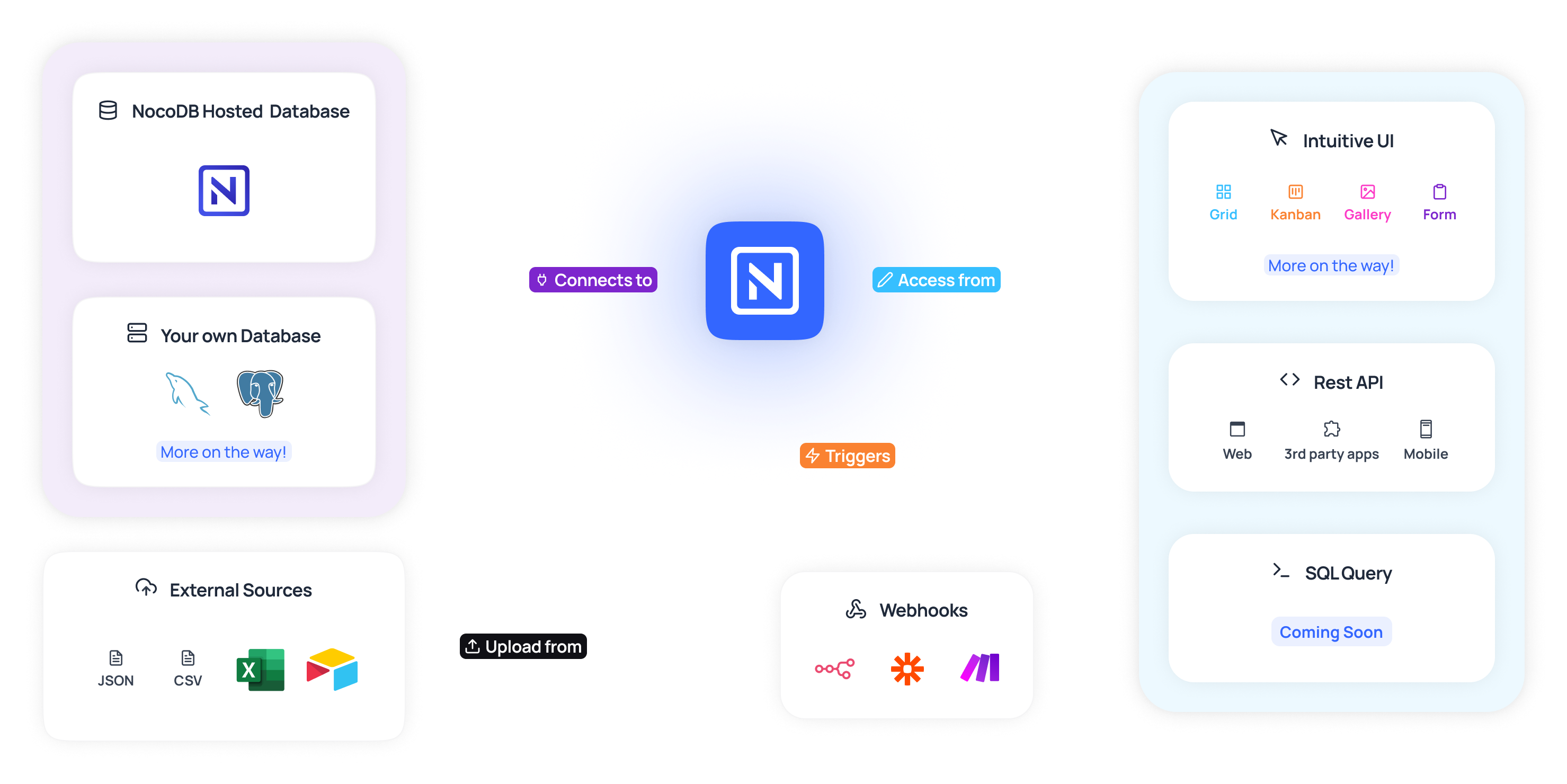Why No-Code is the Future of Open Platform Database Development for Services
Why No-Code is the Future of Open Platform Database Development for Services
Blog Article
A Comprehensive Overview to Applying Scalable Databases Without the Need for Coding Competence
In the modern landscape of data monitoring, the capability to execute scalable data sources without coding knowledge is ending up being increasingly crucial for companies of all sizes. This guide aims to brighten the procedure, concentrating on user-friendly devices and instinctive interfaces that demystify data source setup. By analyzing vital attributes, effective approaches for execution, and best practices for continuous management, we will certainly address just how also non-technical users can with confidence navigate this complex surface. What are the vital elements that can genuinely encourage these customers to leverage scalable data sources properly? The answers might redefine your strategy to data administration.
Comprehending Scalable Databases
In the realm of modern-day information administration, scalable data sources have become an important solution for companies seeking to handle increasing volumes of details successfully. These data sources are designed to fit growth by enabling the smooth addition of resources, whether through horizontal scaling (including extra devices) or upright scaling (upgrading existing makers) This flexibility is crucial in today's fast-paced electronic landscape, where data is created at an unprecedented rate.
Scalable databases typically make use of distributed designs, which make it possible for data to be spread across numerous nodes. This distribution not only enhances efficiency however additionally provides redundancy, making sure information availability also in case of equipment failings. Scalability can be an important factor for various applications, consisting of ecommerce systems, social media networks, and big data analytics, where customer demand can fluctuate dramatically.
In addition, scalable data sources often include robust data consistency designs that balance performance and reliability. Organizations needs to consider their certain demands, such as read and write rates, information stability, and mistake tolerance when choosing a scalable database solution. Inevitably, comprehending the underlying principles of scalable data sources is essential for services intending to flourish in an increasingly data-driven world.
Trick Features to Look For
When reviewing scalable databases, a number of vital attributes are paramount to making sure optimal performance and dependability. Think about the architecture of the database. A distributed style can enhance scalability by enabling information to be kept throughout numerous nodes, facilitating seamless information access and handling as demand increases.
Another critical function is information dividing, which enables effective administration of large datasets by splitting them into smaller sized, more convenient items (no-code). This approach not just improves efficiency yet additionally simplifies source appropriation
Additionally, look for robust duplication capabilities. This function guarantees data redundancy and high schedule, minimizing downtime throughout maintenance or unexpected failures.
Efficiency surveillance tools are also essential, as they provide real-time understandings right into system wellness and functional performance, permitting timely modifications to keep ideal performance.

User-Friendly Data Source Equipment
Simpleness is a vital element in the layout of user-friendly database tools, as it boosts access for individuals with varying degrees of technological knowledge. no-code. These devices focus on intuitive user interfaces, allowing customers to develop, handle, and query data sources without calling for extensive shows knowledge
Key attributes commonly include drag-and-drop functionality, aesthetic information modeling, and pre-built design templates that improve the arrangement procedure. Such tools typically supply directed tutorials or onboarding procedures that assist in individual involvement and reduce the knowing curve. In addition, seamless assimilation with prominent information sources and solutions ensures that customers can conveniently import and export data, additionally streamlining operations.

Additionally, robust support and community sources, such as forums and documentation, improve the individual experience by supplying aid when needed. In general, easy to use database tools encourage companies to harness the power of scalable data sources, making data management easily accessible to everybody entailed.
Step-by-Step Implementation Overview
Exactly how can organizations successfully reference apply scalable data sources to satisfy their expanding information demands? The process starts with recognizing specific data requirements, consisting of the volume, range, and speed of data that will certainly be processed. Next, organizations ought to evaluate straightforward database devices that provide scalability functions, such as cloud-based options or took care of database solutions.
When the ideal tool is selected, the next action includes setting up the database environment. This consists of establishing instances, specifying individual authorizations, and establishing data structures that line up with company objectives. Organizations should then migrate existing information right into the new system, ensuring information honesty and very little interruption to procedures.
Post-migration, performing complete screening is crucial; this includes efficiency testing under various lots problems to make sure the system can handle future growth - no-code. Furthermore, it is essential to train personnel on the database management interface to facilitate smooth usage
Finest Practices for Administration
Efficient monitoring of scalable databases calls for a tactical approach that prioritizes recurring tracking and optimization. To attain this, organizations need to execute robust surveillance tools that provide real-time understandings into database efficiency metrics, such as query response website link times, resource application, and deal throughput. Routinely evaluating these metrics can aid identify bottlenecks and locations for enhancement.

Normal backups and calamity recuperation strategies are vital to secure information stability and accessibility. Developing a routine for examining these backups will make sure a reputable recovery process in instance of an unexpected failing.
Additionally, efficiency tuning need to be a continual process. Adjusting indexing strategies, optimizing queries, and scaling resourcesâEUR" whether up and down or horizontallyâEUR" will aid preserve ideal performance as use needs progress.
Finally, cultivating a society of knowledge sharing amongst group members will certainly allow continuous discovering and adaptation, ensuring that the management of scalable databases continues to be reliable and effective over time.
Final Thought
Finally, the application of scalable data sources can be successfully accomplished without coding know-how with the utilization of instinctive interfaces and easy to use devices. By sticking to the described approaches for configuration, data migration, and efficiency testing, individuals can browse the complexities of database monitoring effortlessly. Highlighting ideal methods for continuous maintenance and cooperation more improves the capability to handle scalable databases successfully in a swiftly evolving data-driven environment.
In the contemporary landscape of data administration, the ability to apply scalable data sources without coding know-how is coming to be his response significantly necessary for organizations of all sizes.In the world of contemporary data management, scalable data sources have actually arised as a crucial service for companies looking for to deal with enhancing volumes of information effectively.Additionally, scalable data sources commonly feature robust data consistency versions that balance performance and dependability.Exactly how can companies efficiently implement scalable databases to meet their expanding information demands? Next off, companies ought to assess straightforward data source devices that provide scalability functions, such as cloud-based solutions or took care of data source services.
Report this page